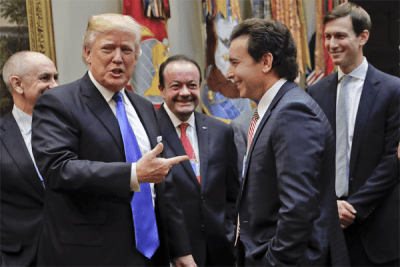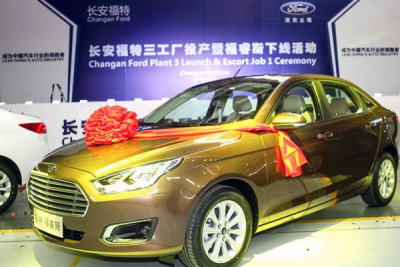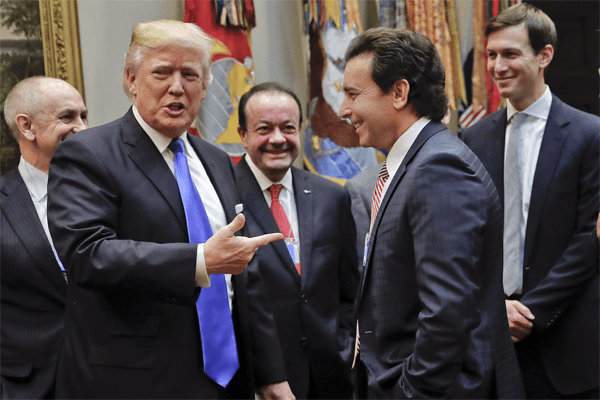 Ford has announced that the next generation Focus sedan will be imported from China, now that other automakers have proven there’s little public backslash nor customer hesitation over quality from cars produced in China. Buick already imports the Enclave from China, Cadillac will follow with the CT6 PHEV and Volvo sells the Chinese made S60L in the US and S90 in Europe. So not a lot of breaking news there, except that the Focus will be the highest volume model so far that will be shipped from China to the US. The big story about this announcement is Ford’s decision to pick China instead of Mexico as the new production base for the Focus. Ford originally planned to move Focus production to a new $1.6 billion plant in San Luis Potosi, Mexico. Those plans were canceled in January, less than a year after announcing them, under public pressure from then-president-elect Donald Trump. Trump singled out Ford for its decision to move production from Michigan to Mexico, which he claimed would cost US jobs. Then-Ford-CEO Mark Fields called Bullshit on Trump as the Focus would make room for production of the Bronco SUV and Ranger midsize pickup at Ford’s Michigan Assembly Plant in 2018, and no US jobs would be lost as a result of this move, but it was too little too late against the media-savvy populist who never let truth get in the way of headline-grabbing claims.
Ford has announced that the next generation Focus sedan will be imported from China, now that other automakers have proven there’s little public backslash nor customer hesitation over quality from cars produced in China. Buick already imports the Enclave from China, Cadillac will follow with the CT6 PHEV and Volvo sells the Chinese made S60L in the US and S90 in Europe. So not a lot of breaking news there, except that the Focus will be the highest volume model so far that will be shipped from China to the US. The big story about this announcement is Ford’s decision to pick China instead of Mexico as the new production base for the Focus. Ford originally planned to move Focus production to a new $1.6 billion plant in San Luis Potosi, Mexico. Those plans were canceled in January, less than a year after announcing them, under public pressure from then-president-elect Donald Trump. Trump singled out Ford for its decision to move production from Michigan to Mexico, which he claimed would cost US jobs. Then-Ford-CEO Mark Fields called Bullshit on Trump as the Focus would make room for production of the Bronco SUV and Ranger midsize pickup at Ford’s Michigan Assembly Plant in 2018, and no US jobs would be lost as a result of this move, but it was too little too late against the media-savvy populist who never let truth get in the way of headline-grabbing claims.
Eager not to let Trump take any credit for the decision not to invest in extra capacity in Mexico, Ford cited cost savings of $500 million as the reason to change its mind and build the next gen Focus at its existing plant in Hermosillo, Mexico instead of investing in the new plant in San Luis Potosi. Now there’s a new CEO at the helm at Ford and plans have changed again: Mexican production is off the table altogether. Again, cost savings of another $500 million are quoted as the reason for the shift of production across the Pacific. These plans were already in the making under Mark Fields, but it was the new boss Jim Hackett who eventually pulled the trigger.
 Automotive News quotes Joe Hinrichs, president of Ford global operations, that “This was not a variable cost decision. It allows us to free up a lot of capital”, because Ford saves a lot of cash by having to retool only one plant – an existing Focus factory in Chongqing, China – rather than two to supply North America. The Chongqing plant already builds the current generation Focus for the local market and will start pumping out US versions of the new generation in 2019. As these retooling savings may differ from one automaker to the next, I don’t think this decision is a warning sign for Mexico that China may soon take over as the leading low-cost manufacturing base for the US. After all, Mexican production is not only cheaper than Chinese production, it has a number of other advantages too.
Automotive News quotes Joe Hinrichs, president of Ford global operations, that “This was not a variable cost decision. It allows us to free up a lot of capital”, because Ford saves a lot of cash by having to retool only one plant – an existing Focus factory in Chongqing, China – rather than two to supply North America. The Chongqing plant already builds the current generation Focus for the local market and will start pumping out US versions of the new generation in 2019. As these retooling savings may differ from one automaker to the next, I don’t think this decision is a warning sign for Mexico that China may soon take over as the leading low-cost manufacturing base for the US. After all, Mexican production is not only cheaper than Chinese production, it has a number of other advantages too.
Firstly and obviously, there’s the matter of distribution and transportation costs. There’s already a network of railroads connecting the Mexican manufacturing bases to the US, which makes transportation of the cars cheaper than shipping them across the Pacific ocean, especially when oil prices start to inevitably rise again. Then there’s the hourly wages of workers, which you may think are much lower in China, but then you’d be mistaken. An auto worker in the US can fetch anything between $40 and $60 an hour, and wages in Mexico are expectedly much lower at $8 to $10 an hour, but their Chinese counterparts are not far behind or even at a similar level. Wages in China are still very  dependent on the exact location but can range from $5 to as much as $9 an hour, and have been rising quickly across the country and will continue to do so in the near future. Import duties are another factor, especially with an unpredictable president in the US who has already threatened with raising import duties to “protect US manufacturing jobs against unfair competition”. While the North American Free Trade Agreement (NAFTA) limits Trump’s abilities to raise taxes on cars imported from Mexico, it would be fairly easy for him to do so on Chinese imports, especially since one of his first acts in office was to tear up the Trans-Pacific Partnership trade agreement. And lastly, the Chinese government still requires foreign automakers who want to produce (and sell) vehicles in the country to enter a Joint Venture with a local partner, and limits the ownership of the JV by the foreign entity to 50%. The Chonqing plant that produces the Focus is co-owned by Changan, who will skim 50% of that factory’s earnings. This means Ford (and any automaker) makes less money per car that’s produced in a factory from one of their Joint Ventures compared to one produced at a wholly-owned factory.
dependent on the exact location but can range from $5 to as much as $9 an hour, and have been rising quickly across the country and will continue to do so in the near future. Import duties are another factor, especially with an unpredictable president in the US who has already threatened with raising import duties to “protect US manufacturing jobs against unfair competition”. While the North American Free Trade Agreement (NAFTA) limits Trump’s abilities to raise taxes on cars imported from Mexico, it would be fairly easy for him to do so on Chinese imports, especially since one of his first acts in office was to tear up the Trans-Pacific Partnership trade agreement. And lastly, the Chinese government still requires foreign automakers who want to produce (and sell) vehicles in the country to enter a Joint Venture with a local partner, and limits the ownership of the JV by the foreign entity to 50%. The Chonqing plant that produces the Focus is co-owned by Changan, who will skim 50% of that factory’s earnings. This means Ford (and any automaker) makes less money per car that’s produced in a factory from one of their Joint Ventures compared to one produced at a wholly-owned factory.
 Ironically, just 2,5 months ago I also wrote an article about Mexico, China and the US, and this described/predicted how the Chinese would gladly step into the Mexican production gap that the US might leave if they started to (virtually) close the borders to Mexico. I pointed out that some Chinese brands are already planning to start Mexican production, not only because of the lower costs, but also to create goodwill for their brands and because Mexico is a great base for exports to the huge South American market. Now an American brand is moving the exact opposite direction. If anything, it proves how global and how flexible auto manufacturing has become for brands to so easily shift production from one country to the other. For Ford, let’s hope oil prices remain low and the US-Chinese trade relations remain stable.
Ironically, just 2,5 months ago I also wrote an article about Mexico, China and the US, and this described/predicted how the Chinese would gladly step into the Mexican production gap that the US might leave if they started to (virtually) close the borders to Mexico. I pointed out that some Chinese brands are already planning to start Mexican production, not only because of the lower costs, but also to create goodwill for their brands and because Mexico is a great base for exports to the huge South American market. Now an American brand is moving the exact opposite direction. If anything, it proves how global and how flexible auto manufacturing has become for brands to so easily shift production from one country to the other. For Ford, let’s hope oil prices remain low and the US-Chinese trade relations remain stable.









